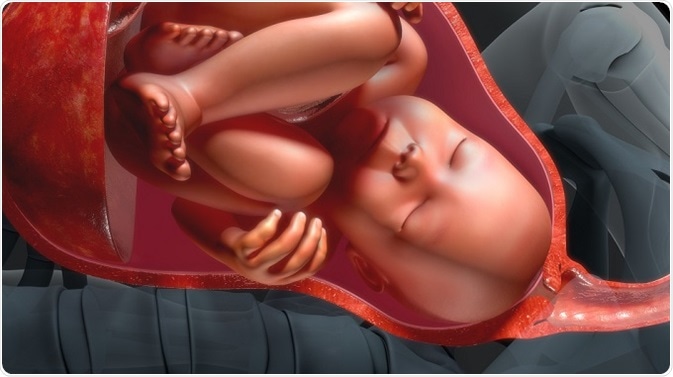By Jana Free
HIE (hypoxic-ischemic encephalopathy) is a birth injury that children obtain due to lack of oxygen and blood flow at, or near, the time of birth. The condition causes brain injuries, and often results in developmental and cognitive impairments – including cerebral palsy. HIE is also called birth asphyxia, neonatal encephalopathy and perinatal asphyxia.

Credit: sciencepics/Shutterstock.com
Because oxygen and blood flow cuts off from parts of the brain, some newborns’ brain cells start to break down. Cells release lactic acid and various compounds that can disrupt normal cellular function.
HIE impacts all of the brain’s cells, but neurons are most vulnerable because of hypoxia and ischemia that occurs in HIE-related brain damage. Referred to as selective neuronal necrosis, the process in which brain cells begin to die is like a rapid chain reaction of damage, making the condition increasingly worse.
HIE or Neonatal Encephalopathy Characterized by Oxygen Deprivation
Neonatal Encephalopathy is a term commonly associated with HIE. It typically describes newborn neurological function that has been disturbed in some way. Because HIE also refers to disturbed neurological function, medical staff often use the names interchangeably.
HIE is the most common kind of neonatal encephalopathy. Signs and symptoms of the various types of neonatal encephalopathy include:
- Seizures
- Respiratory issues
- Feeding issues
- Sluggish reflexes
- High or low muscle tone
Other common ways of referring to HIE include:
- Birth asphyxia
- Fetal oxygen deprivation
- Oxygen deprivation at birth
- Perinatal asphyxia
- Baby not breathing at birth
Types and Forms of HIE & How We Measure It
We can classify HIE into various categories, depending on the severity of oxygen deprivation. If medical staff suspect HIE in an infant, they often conduct brain imaging through MRI or ultrasound, to discover the extent of brain tissue damage.
Caregivers may also conduct a blood gas test, which determines a baby’s blood pH and provides additional information about oxygen levels.
Sometimes, physicians use Sarnat staging to determine the severity of HIE. This process takes into consideration exam results, clinical presentation, presence of seizures and duration of illness. Sarnat staging results, together with EEF findings, help accurately identify a newborn’s prognosis.
Many infants with mild HIE have a normal outcome (temporarily, at least), but babies with severe HIE have a high mortality rate. Roughly 80% of survivors show neurological sequelae signs. Infants with mild HIE classify under Sarnat Grade 1. The severity of HIE can reach a maximum at Stage III.
HIE Incidence and Prevalence
An estimated 2 to 9 live births out of 1,000 are HIE-related births. Between 10% and 60% of newborns with HIE die, and roughly 25% of those who live have severe brain damage and impairments. Most of the time, HIE occurs at the time of labor and delivery.
How to Identify HIE
Medical staff can use head imaging to diagnose HIE. Typical methods include photographing an infant’s brain using MRI or ultrasound, in search of any abnormalities. Sometimes, physicians conduct additional tests including:
- PET Scans
- CT Scans
- Blood Glucose Tests
- EEGs
- Arterial Blood Gas Test
If doctors suspect that a baby has suffered oxygen deprivation, they’ll order diagnostic imaging. Many times, their suspicions arise during labor and delivery if the birth process was traumatic, or if there were complications present during the birth process.
Sometimes, however, HIE does not show up until a child is older and begins to show poor motor control. Often, an HIE child will display delayed development, or miss critical milestones and show other signs that are concerning.
Treatment for HIE
Physicians and caregivers manage HIE through hypothermia therapy, which is a treatment that cools the baby’s brain or body down to below-normal temperatures. This slows the chain reaction of widespread damage, and it gives the baby’s brain time to recover.
Hypothermia therapy also minimizes the level of disability children have as they develop and grow. Medical staff must administer this critical therapy within 6 hours of birth.
Hypothermia therapy lasts for about 72 hours, which is enough time to allow the infant’s metabolic rate to slow down. This pace and duration prevents reperfusion injury, which can occur when normal oxygen and flood flow restore too rapidly to brain cells. Hypothermia therapy stabilizes brain cells and prevents, or at least limits, inflammation.
Medical staff also often administer supportive care. This care includes helping the infant breathe, controlling and preventing low blood sugar and seizures, reducing brain swelling, and seeking out specialists.
The life expectancy of infants with HIE depends largely on the extent of the condition, as well as on the children’s access to adequate treatments. Thus, it is difficult to determine an average lifespan for an HIE newborn. With the right resources and information, however, a child’s life can be prolonged and normal function is sometimes enhanced.
Acknowledgements
Produced in partnership with HIE Help Center, who produce resources and information on hypoxic ischemic encephalopathy.
Further Reading
Disclaimer: This article has not been subjected to peer review and is presented as the personal views of the author in accordance with the general terms and condition of use of the News-Medical.Net website. Please note that medical information found on the News-Medical website is designed to support, not to replace the relationship between patient and physician/doctor and the medical advice they may provide. At all times seek professional medical advice before acting on any information you read on News-Medical.Net.